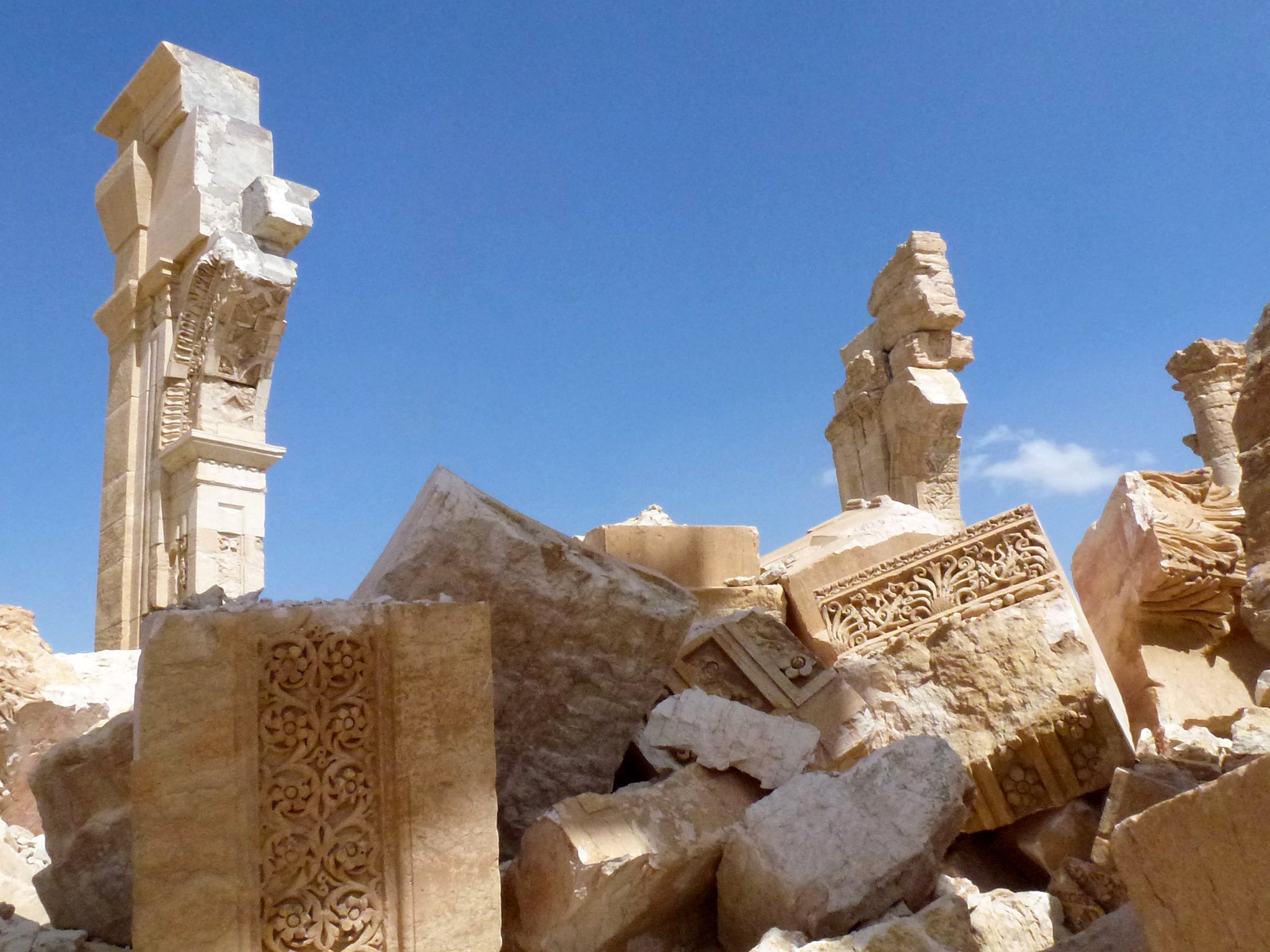‘Five years’ to undo damage done to Palmyra in 10 months under Isis, Syrian expert says
‘We have the staff, the knowledge and the research'

Restoring the ancient city of Palmyra to its former glory and undoing the damage done by the Isis militant group could take five years, according to Syria’s antiquities chief.
Maamoun Abulkarim said a team of experts was set to arrive in the ancient city little more than 24 hours after the Syrian army declared it had recovered “complete control” over the Roman-era ruins.
The Damascus-based official said he hoped to visit Palmyra to assess the damage done since Isis captured the Unesco world heritage site in May last year.
Speaking to the AFP news agency, Mr Abdulkarim appeared to sound a hopeful note that, after expecting the worst, the landscape, in general is in "good shape”.
Two of Palmyra’s finest structures, including the 2,000-year-old Temple of Bel, have been almost completely destroyed.
The group also appears to have destroyed a dozen of the city’s best-preserved tower tombs, as well as the shrine of Baal Shamin.
But Mr Abdulkarim said around 80 per cent of the city, including the impressive ancient amphitheatre used by Isis as a setting for executions, remained standing.
He told AFP: “If we have Unesco’s approval, we will need five years to restore the structures damaged or destroyed by Isis.”
Work could potentially begin within a year, he said, adding that Syria already has “the qualified staff, the knowledge and the research” to do so.
Palmyra recaptured by Syrian government forces
Show all 10On Sunday, state TV showed the rubble left over from the destruction of the Temple of Bel in Palmyra, as well as the damaged archway, the supports of which are still standing.
Artefacts inside the city's museum also appeared heavily damaged on state TV. A sculpture of the Greek goddess Athena was decapitated, and the museum's basement appeared to have been dynamited, the hall littered with broken statues.
State media reported that a lion statue dating back to the second century, previously thought to have been destroyed by IS militants, was found in a damaged but recoverable condition.
Mr Abdulkarim told the Associated Press that Isis fighters smashed the statues' faces but did not totally destroy them.
"We can renovate them," he said. "Yes, we lost part of the original but we didn't totally lose them."
The Russian government has confirmed it played a part in the three-week military operation to take Palmyra that saw the bulk of Isis forces finally retreat under cover of darkness on Saturday night.
The Kremlin said the Russian air force would continue to assist Syrian government troops - but denied reports Russian soldiers were used on the ground.
"We are talking about air support by our planes. Our armed forces are not conducting any land operations there," Kremlin spokesman Dmitry Peskov told reporters.
"After the withdrawal of part of our (military) contingent from Syria, air force units remaining at two bases - in Hmeymim and Tartous - will continue fighting terrorist groups ... and will continue supporting the Syrian's army's offensive."
Subscribe to Independent Premium to bookmark this article
Want to bookmark your favourite articles and stories to read or reference later? Start your Independent Premium subscription today.

Join our commenting forum
Join thought-provoking conversations, follow other Independent readers and see their replies